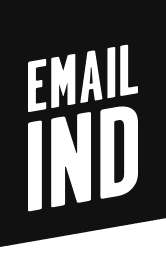In today’s digital age, where our mailboxes are constantly flooded with messages, the art of crafting personalized emails is a crucial skill that can set your business apart from the crowd. As an entrepreneur, the biggest challenge ahead of you is customer engagement. And the first thing to remember is that customers are more than just names on your mailing list. They expect you to treat them better than mere sales targets. So, how do you build a personal connection?
Personalized email marketing can help you reach out to potential and existing clients in a manner that encourages them to interact with your business. And while it may seem like a no-brainer, you will be surprised by the number of business owners that lack an effective email personalization strategy. A personalized email marketing campaign follows a customer-first policy, and that is a marketing technique you want to master at the earliest.
This blog cultivates the fundamentals of email personalization, discusses the best practices, and analyzes real-world examples to help you create effective email marketing campaigns. Let’s dive straight into it.
What is Email Personalization?
Email personalization is the art of creating relevant content for the audience. It leverages customer data like name, age, gender, location, browsing history, preferences, and behavior to create personalized emails for the target market. Targeted emails deliver relevant messages addressing the customer’s pain points for maximum engagement. It requires providing the right content to the right person at the right time.
Email personalization is a broad term. While basic personalization plans include simple measures like creating a personalized subject line with the customer’s name, advanced personalization tactics follow a more detailed procedure like creating dynamic content based on customer data like age, gender, buying habits, etc.
Email personalization is a proven strategy for increasing open and click-through rates, and it can significantly boost your ROI and revenue. You must focus on sending the most relevant message to the audience. For instance, if a customer wants to renovate their front yard, you can send an email sharing the benefits of hiring a professional landscaping service that can streamline the process.
The Importance of Email Personalization for Business
Personalized communication is a fundamental email marketing tool for businesses. Let’s walk you through the primary reasons.
Higher Open Rates
Personalized subject lines stand out in a sea of generic subject lines. Hence, they are more likely to generate interest. In fact, there is a 50% greater chance of your emails being read if you put the recipient’s name in the subject line.
Increased ROI
Customized email campaigns can significantly boost your ROI by encouraging customers to read your messages and take the desired action. While it costs nothing to personalize your emails, the results are drastically different.
Enhanced Customer Relationship
Your audience will most likely interact with personalized emails that either solve a problem or cater to their interests. Hence, email personalization strategies can encourage customers to interact with your business, which might convert into a sale.
Higher Conversion Rates
Infusing personalized elements with the right data in your email marketing strategy is the most effective way to initiate action from the target audience. Personalized content works best since the messages resonate with the reader, urging them to interact with your business.
How Can Email Personalization Improve Deliverability?
Now that you know why email personalization is crucial for business, let’s delve into how it boosts email deliverability. Here are the top three ways in which personalized email campaigns improve deliverability.
Generates Engagement
Since personalized emails are tailored to the audience’s preferences, they contain relevant information, offering better value than generic messages. Hence, users are more likely to open, read, and respond to your message. As a result, email marketing personalization drastically improves user engagement rates over time.
Reduces Unsubscription Rates
Existing customers feel valued when you send relevant emails. And they often look forward to personalized offers. Email personalization techniques can drastically reduce unsubscription rates by creating loyalty and mutual trust. When you stop bombarding customers with random emails, they tend to stay subscribed, leading to higher user retention rates.
Builds Stronger Customer Relationships
The most effective way of nurturing positive customer behavior is by treating the audience as humans and fulfilling their wants, demands, and expectations. Start personalizing emails to bridge the communication gap between your business and the subscribers. Use double opt-in forms to ensure your audience wishes to stay subscribed. Remember, you cannot force people to like your content.
5 Email Personalization Strategies
We’ve curated five great examples of personalized emails that the top brands currently use. If your brain is tingling with great ideas, we hope these targeted personalization examples inspire you to create even more intriguing campaigns.
Welcome Email
Welcome emails are one of the most significant messages you send subscribers, as starting the customer journey on the right foot is essential for long-term commitment. Hence, big brands often leverage the power of email personalization to show customers that they are invaluable.
Welcome emails often address the reader directly in the subject line and throughout the body. It’s essential to send the message right after someone signs up. You can personalize the email copy by adding dynamic content tags and custom fields.
Order Confirmation Email
An order confirmation email is the most critical transactional message in eCommerce. It’s a crucial communication that all subscribers expect, and you can enhance the user’s experience by personalizing the content. Remember to create targeted messages by avoiding clutter and putting the essential information on top. Use a conversational tone throughout the body, and wish the reader a good day or great experience at the end.
Onboarding Email
Onboarding emails are a great personal touch, as they make the customer feel essential and confident about their decision to purchase from you. Start with a private message that reassures and encourages the client, followed by an exclusive offer like a discount on their next purchase. You must personalize subject lines for better results. And remember to put a contextual CTA at the end of the email.
Product Recommendation Email
Sending personalized product recommendations is a great way to re-engage inactive subscribers. Email marketers often use this strategy to reinvigorate old mailing lists. All the major brands, from Amazon to Netflix, employ triggered emails to reach customers at a personal level. Product recommendation emails are tactically targeted based on the user’s browsing history, and they add attractive deals to entice readers.
Rewards and Loyalty Program Email
Most high-end retailers run rewards and loyalty programs that returning customers can make the most of. These offers accentuate the brand’s reputation by making clients feel confident and comfortable with future transactions. When creating a rewards and loyalty email campaign, remember to use personalized images, add details about the points earned, and include a CTA redirecting customers to the rewards and loyalty dashboard.
Role of AI in Creating Personalized Emails
In this day and age, AI-powered tools have emerged as a game-changer for businesses looking to engage customers with personalized email campaigns. By leveraging the capabilities of artificial intelligence and machine learning, a professional marketing team can seamlessly gather data and use it to implement personalization via marketing automation.
AI-Powered Personalization
AI-powered personalization can take your email marketing campaign to new heights. AI analyzes user data, behavior, and preferences seamlessly to create highly targeted messages that resonate with the audience at an intimate level. From creating a personal subject line to offering dynamic product recommendations according to the user’s browsing history, AI can personalize emails to meet your customer’s unique demands.
Advanced Email Segmentation
With the help of AI, you can segregate your mailing list into distinct groups based on specific criteria like engagement history, demographics, or purchasing behavior. This allows you to trigger emails relevant to the customer and target particular segments of your audience. Most email marketing software today streamlines segmentation, making it easier to deliver behavioral emails and boost engagement and conversions.
Smart Email Automation
With the help of intelligent marketing automation, you can now create automated workflows that deliver messages based on user behavioral patterns, actions, and responses to specific events. You can set up triggers to ensure the right message reaches the right person at the right time. This is crucial for nurturing leads, onboarding clients, and engaging with the audience throughout the journey with minimum manual effort.
Dynamic Email Content
With the help of AI, you can now create dynamic content based on customer preferences. Send custom product recommendations, bespoke offers, or dynamic content blocks based on real-time data. Email Industries’ AI capabilities help marketers create dynamic content that engages the reader and maximizes conversions.
Schedule a discovery call today to learn how our email marketing platform can boost ROI for your marketing campaigns.
Head of Growth at Email Industries

